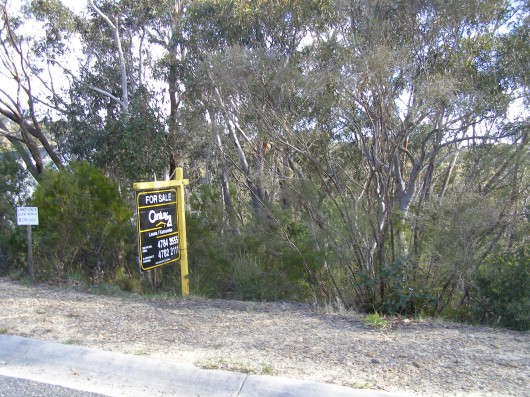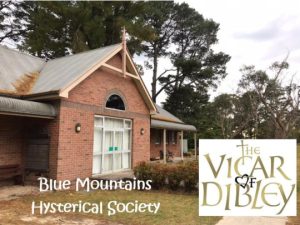‘Hazard Reduction’ premise at risk
Tuesday, March 13th, 2012 Flogging the bush for housing, undefendable in the event of a bushfire
Stuarts Road, Katoomba – a house has since been approved by Council and subsequently built on this site, killing the wildlife habitat in the process.
Flogging the bush for housing, undefendable in the event of a bushfire
Stuarts Road, Katoomba – a house has since been approved by Council and subsequently built on this site, killing the wildlife habitat in the process.(Photo by Editor 20070922, free in public domain, click photo to enlarge)
.
Part and parcel of choosing to live in the Blue Mountains is that, by being on ridgelines surrounded by Eucalypt forests, many properties are inherently exposed to bushfire threat. Whether bushfires be caused by lightning (rarely), accidentally by people, RFS-prescribed, or by arson (usually); bushfire risk management is a community responsibility – not just the lot of Rural Fire Service volunteers.
The arson threat aside,
“residents, land owners and land managers of the Blue Mountains need to accept that they are in a bushfire prone area and their properties may be subject to ember attack when threatened by bushfire.”
[Blue Mountains Conservation Society Bushfire Policy].
.
To dispel a rural myth, not all native habitats recover from bushfire. Certain species exist only in ecosystems that are never burnt. Post-bushfire regrowth often sporns dominant species like Eucalypt and Acacia, whereas original biodiversity may take centuries to recover. Bushfire is often a precursor to infestations of grass and weeds, and if followed by intense
rain, also a catalyst for eroding irreplaceable native soils.
The antique premise ‘hazard reduction’ has become spin for pre-emptive burning that is prone to escaping out of control and so itself a hazard.
Slashing and bulldozing under the premise of ‘Asset Protection Zone’ is also proving ineffective against ember attack and wildfire. But like arson, the Hazard Reduction and APZ theories contribute to the net loss of important habitat.
Proven effective and sustainable is early detection & response to spot fires.
Most artificial fires start on developed land, so this is where control measures should be focused – maintenance of gardens and guttering, retrofitting houses with materials and defences to resist fire, planting fire-retardant hedging around houses and implementing countermeasures recommended by Australian Standard 3959.
The future of sustainable bushfire risk management starts by preventing houses being built where they cannot be safely protected from bushfires.
Effective ‘hazard reduction’ is investigating and catching the arsonists.






